The Indigenous Bhil People
Ethnonyms: Bhili, Bheel Countries inhabited: India, Pakistan Language family: Indo-European Language branch: Indo-Aryan
Click/tap an image to begin a captioned slideshow and, where available, stock licensing information.
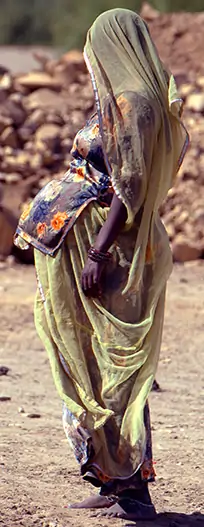 Bhils are one of the largest indigenous groups in India, where they are now designated as a Scheduled Tribe. They are also among the most economically deprived peoples of India. Today, they are mainly sedentary herders and agriculturalists, with some migrant wage-laborers.
In ancient times they enjoyed a much greater status in Indian society than they do now.
Bhils are one of the largest indigenous groups in India, where they are now designated as a Scheduled Tribe. They are also among the most economically deprived peoples of India. Today, they are mainly sedentary herders and agriculturalists, with some migrant wage-laborers.
In ancient times they enjoyed a much greater status in Indian society than they do now.
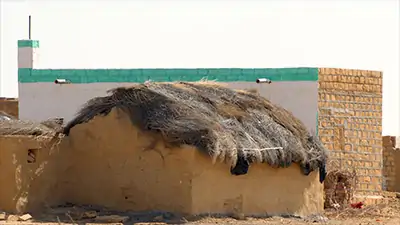 Their decline in status began during the Mughal Empire (which quashed rebellions in the mid-17th Century). Two hundred years later their status had declined further under British imperial rule. Many were under trans-generational, indentured bondage — a legacy that still continues. Like the Mughals before them, the British quashed a number of rebellions.
Their decline in status began during the Mughal Empire (which quashed rebellions in the mid-17th Century). Two hundred years later their status had declined further under British imperial rule. Many were under trans-generational, indentured bondage — a legacy that still continues. Like the Mughals before them, the British quashed a number of rebellions.
Another legacy of the Bhil that continues today is that of their traditional homes. They live in small, thatched mud houses. Sometimes the walls are supported by timber and animal dung.
In these houses live, typically, an extended family of a Bhil clan.
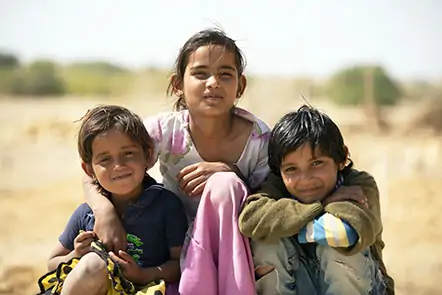 There are many such clans among the Bhil, but at most a few different clans
will be represented in any one village. Any given region where the Bhil form a high population will also contain a small number of the total clans. The Bhil are dispersed throughout India in the states of Chhattisgarh, Gujarat, Madhya Pradesh, Maharashtra, Rajasthan and Tripura. Clans and dialects of the language are equally dispersed.
There are many such clans among the Bhil, but at most a few different clans
will be represented in any one village. Any given region where the Bhil form a high population will also contain a small number of the total clans. The Bhil are dispersed throughout India in the states of Chhattisgarh, Gujarat, Madhya Pradesh, Maharashtra, Rajasthan and Tripura. Clans and dialects of the language are equally dispersed.
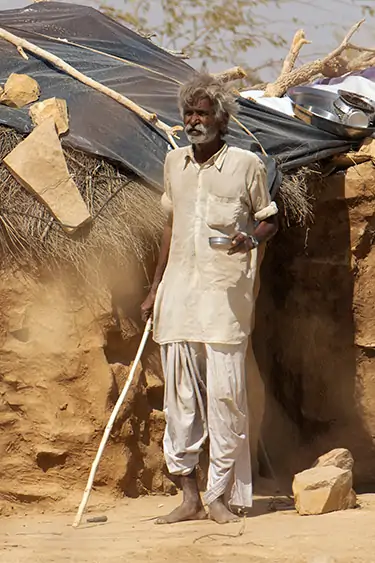 Although hunting has been officially banned in India for some time,
Although hunting has been officially banned in India for some time,
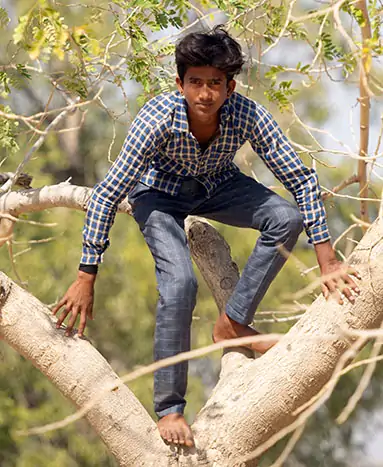 the Bhil are among the few hunter-gatherer peoples left in the world. To avoid detection they hunt mainly by night.
Bow-and-arrow hunting is still practiced. (Their name is thought to come from an ancient word for bow and they are sometimes referred to as bowmen or archers.) This hunting is not without controversy. Many Bhils live in close proximity to communities of the religious sect known as the
Bishnoi.
That group's religion forbids eating meat from any animal. The Bishnoi also do not cut down trees; their religion allows them only to use fallen limbs and branches. They would be horrified to see this young Bhil boy climbing a tree.
the Bhil are among the few hunter-gatherer peoples left in the world. To avoid detection they hunt mainly by night.
Bow-and-arrow hunting is still practiced. (Their name is thought to come from an ancient word for bow and they are sometimes referred to as bowmen or archers.) This hunting is not without controversy. Many Bhils live in close proximity to communities of the religious sect known as the
Bishnoi.
That group's religion forbids eating meat from any animal. The Bishnoi also do not cut down trees; their religion allows them only to use fallen limbs and branches. They would be horrified to see this young Bhil boy climbing a tree.
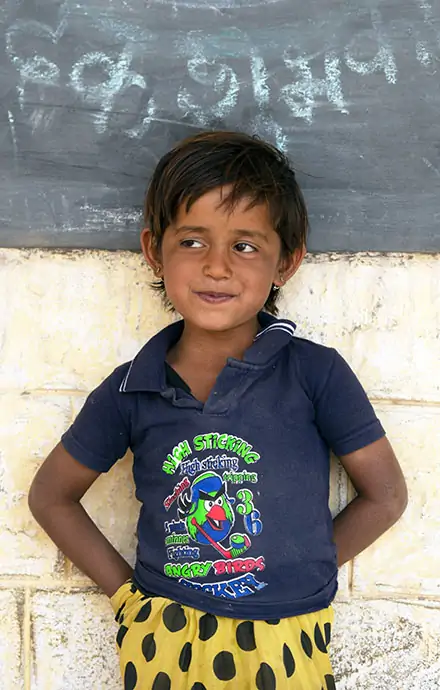
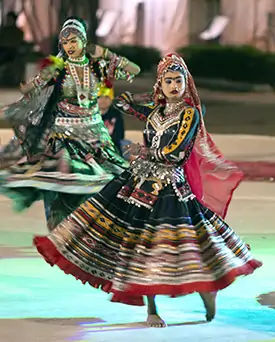 Due in part to their long history (they are among the earliest inhabitants of some parts of India and are even mentioned
in the epic stories, Mahabharata and Ramayana),
the Bhil have a rich cultural heritage. Their society has become somewhat egalitarian. Both men and women are allowed to practice polygamy. Children are encouraged to seek independence from a young age. Outside of their villages, Bhils are almost indistinguishable from those around them. Adults more or less adopt the customary dress of their region. But during festivals and ceremonies — be they weddings or the Baneshwar — Bhil tradition comes alive in the form of more elaborate dress and jewelry. Traditional performances of song, dance, music and magic are all on hand, accompanied by homemade alcohol.
Due in part to their long history (they are among the earliest inhabitants of some parts of India and are even mentioned
in the epic stories, Mahabharata and Ramayana),
the Bhil have a rich cultural heritage. Their society has become somewhat egalitarian. Both men and women are allowed to practice polygamy. Children are encouraged to seek independence from a young age. Outside of their villages, Bhils are almost indistinguishable from those around them. Adults more or less adopt the customary dress of their region. But during festivals and ceremonies — be they weddings or the Baneshwar — Bhil tradition comes alive in the form of more elaborate dress and jewelry. Traditional performances of song, dance, music and magic are all on hand, accompanied by homemade alcohol.
Having been isolated and having resisted outside influences for a long time, the Bhil are now slowly entering into mainstream Indian society. As is usual in these situations, they are also slowly being culturally assimilated. This trend is, to some extent, an outcome of government policy. In India, there is, superficially at least, a movement toward national unity (whatever that means). The challenge for groups like the Bhil will be navigating this integration in a manner that allows them to maintain their culture — including their language, societal structure and religion.
The overall standard of public education in both India and Pakistan is low. It is very low in rural areas and, effectively, non-existent in predominantly tribal areas. The national literacy rate among indigenous people in India is less than 10%. But education is the key to the Bhil (and other indigenous peoples) successfully navigating the challenges they face when entering into mainstream society.
A second, but equally important, key lies more in the hands of government and mainstream society than in the hands of the Bhil themselves. India (and via historical heritage, Pakistan) has one of the most-preserved ancient legacies of class-based societal sociology. In practice, that means that the Bhil are attempting to enter a society that regards them as inferior human beings a priori.
Photography copyright © 1999 -
2025,
Ray Waddington. All rights reserved.
Text copyright © 1999 -
2025,
The Peoples of the World Foundation. All rights reserved.

Waddington, R. (2019), The Indigenous Bhil People. The Peoples of the World Foundation. Retrieved December 27, 2025, from The Peoples of the World Foundation. <https://www.peoplesoftheworld.org/text?people=Bhil>
Web Links
Books
Khare, R., (2000) The Dangs: Journeys Into The Heartland. New Delhi: HarperCollins Publishers India.
Khare, R., (2001) The Singing Bow: Song-Poems of the Bhil. New Delhi: HarperCollins Publishers India.

